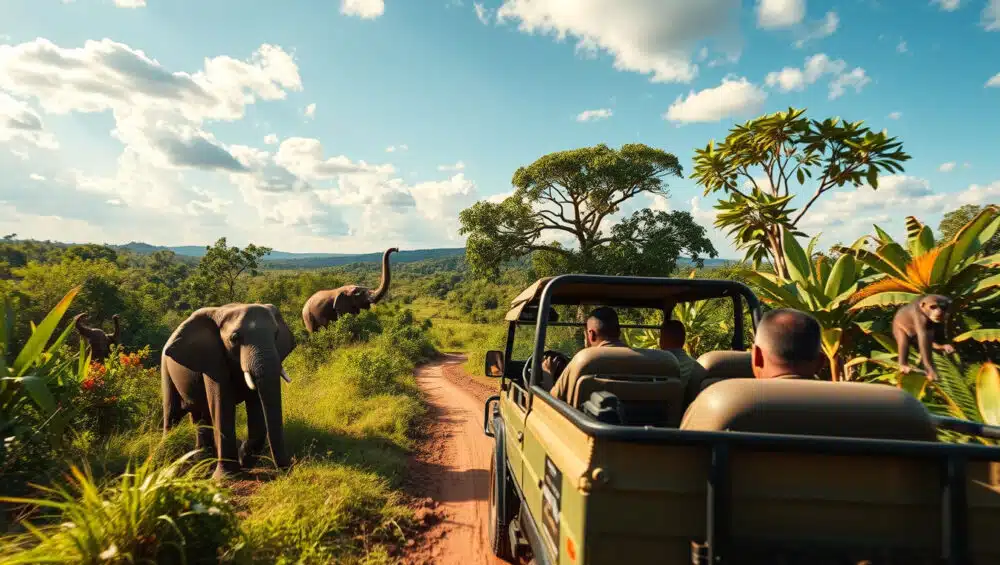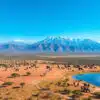Planning your first safari can be an exhilarating yet daunting adventure, especially in a country as diverse and vibrant as Uganda, known as the Pearl of Africa. With its stunning landscapes, rich wildlife, and warm-hearted people, Uganda offers a unique experience that is sure to leave an indelible mark on your travel memories. In this comprehensive guide, we will delve into all the essential aspects of planning your safari in Uganda, from understanding the different safari landscapes and the best times to visit, to choosing the right activities and tour operators. Whether you’re eager to track the majestic mountain gorillas or witness the dazzling array of wildlife in Queen Elizabeth National Park, this first-timer’s guide will equip you with everything you need to ensure a remarkable safari experience in Uganda.
 Uganda‘ style=’display: block; margin: auto; max-width: 100%; height: auto;’>
Uganda‘ style=’display: block; margin: auto; max-width: 100%; height: auto;’>
Key Takeaways
- Uganda offers diverse safari landscapes, from dense jungles to expansive savannahs.
- The best time for a safari in Uganda is during the dry seasons, typically from June to August and December to February.
- Choose from various safari types, including wildlife drives, boat safaris, and gorilla trekking experiences.
- Research and select reputable tour operators to ensure a safe and enjoyable safari experience.
- Pack essentials like binoculars, sunscreen, and insect repellent to enhance your safari adventure.
Understanding Uganda‘s Safari Landscape
When considering a breathtaking safari experience, Uganda is often a top contender, merging stunning landscapes and incredible wildlife encounters. A First-Timer’s Guide to Planning a Safari in Uganda is essential for navigating this East African gem, which boasts diverse ecosystems, from the dense jungles of Bwindi Impenetrable National Park to the expansive savannahs of Queen Elizabeth National Park. Your journey begins with understanding the best seasons to visit—typically from June to September and December to February—when wildlife is most active. Engaging a reliable tour operator can enhance your experience, guiding you to iconic attractions like the majestic Mountain Gorillas, tree-climbing lions, and over 1,000 bird species. With Uganda‘s welcoming locals and unique cultural experiences, a well-planned safari is not just about the wildlife; it’s an adventure that encompasses the heart and soul of this beautiful country.
Choosing the Right Time to Go
Choosing the right time to go is one of the most crucial aspects of planning a successful safari in Uganda, especially for first-timers. Uganda‘s climate is predominantly tropical, with two main rainy seasons that can affect wildlife viewing and trekking conditions. The best time to embark on your safari adventure is generally during the dry seasons, which run from December to February and June to August. During these months, animals are more likely to congregate around water sources, making them easier to spot. Additionally, the roads are more accessible, allowing you to reach remote national parks without the risk of getting stuck in muddy terrain. However, if your interest lies specifically in gorilla trekking, consider visiting in June or July when the animals are more active and the vegetation is thinner, providing clearer visibility. Understanding Uganda‘s seasonal patterns will ensure that your safari aligns with optimal wildlife experiences, which is fundamental in a first-timer’s guide to planning a safari in Uganda.
‘The best way to observe a fish is to become a fish.’ – Jacques Cousteau
Selecting Safari Types and Activities
When embarking on an adventure in Uganda, selecting the right safari types and activities is crucial for creating an unforgettable experience. A First-Timer’s Guide to Planning a Safari in Uganda should start with understanding the various options available, from traditional game drives in Murchison Falls National Park to thrilling walking safaris in Queen Elizabeth National Park. Each safari type offers unique opportunities to observe Uganda‘s rich wildlife, including gorillas, lions, and elephants, while also providing breathtaking landscapes. For those seeking an immersive experience, consider adding activities such as boat safaris on the Kazinga Channel or visiting the renowned Bwindi Impenetrable Forest for a once-in-a-lifetime gorilla trekking adventure. Tailoring your safari to match your interests—be it birdwatching, cultural experiences, or photography—will enhance your journey through this diverse and stunning country.
Finding the Best Safari Tour Operators
When embarking on your adventure in Uganda, finding the best safari tour operators can significantly enhance your experience. A First-Timer’s Guide to Planning a Safari in Uganda suggests that you start by doing thorough research on local operators who specialize in safaris. Look for operators with positive reviews and testimonials from previous travelers, as this can give you insights into their level of service and expertise. Consider their range of safari packages, including guided tours, accommodations offered, and the included activities—such as game drives, boat safaris on the Nile, or trekking in Bwindi Impenetrable National Park to see endangered mountain gorillas. Additionally, ensure that the safari tour operator adheres to sustainable and eco-friendly practices, as this not only supports local communities but also helps preserve Uganda’s stunning wildlife and natural landscapes. Don’t hesitate to reach out to multiple operators to compare prices and itineraries, and feel free to ask questions about their safety measures and guides’ qualifications. By taking these steps, you can ensure a memorable and enriching safari in the heart of Africa.
Essential Packing List for Your Safari
When planning your adventure, one of the most crucial elements to consider is your packing list. For those diving into the wild beauty of Uganda for the first time, our Essential Packing List for Your Safari can make a significant difference in your experience. Start with lightweight, breathable clothing to ensure comfort during the day, as temperatures can rise quickly. Don’t forget to bring a durable pair of binoculars and a quality camera to capture Uganda’s breathtaking wildlife. Insect repellent is a must to fend off pesky mosquitos, especially in the evenings. Also, consider packing a reusable water bottle to stay hydrated in the heat. As part of A First-Timer’s Guide to Planning a Safari in Uganda, it’s wise to include a first-aid kit, sunscreen, and a hat for sun protection. By ensuring you have all the essentials, you’ll set yourself up for a memorable and hassle-free safari experience.”} assistant аний & статус:
Tips for a Responsible and Sustainable Safari
When planning your adventure with a first-timer’s guide to planning a safari in Uganda, it’s essential to prioritize responsible and sustainable practices. Start by choosing eco-friendly lodges that minimize their impact on the environment and support local communities. Engaging local guides not only enhances your experience with their invaluable knowledge but also ensures that the economic benefits of tourism reach the communities. Additionally, be mindful of wildlife interactions: maintain a respectful distance, avoid disturbing animals, and never feed them. Stick to designated paths during your trek to protect fragile ecosystems. Lastly, familiarize yourself with local customs and conservation efforts to deepen your appreciation of Uganda‘s rich biodiversity and cultural heritage. By following these tips, you can enjoy an unforgettable safari while contributing positively to the beautiful landscapes and wildlife of Uganda.





